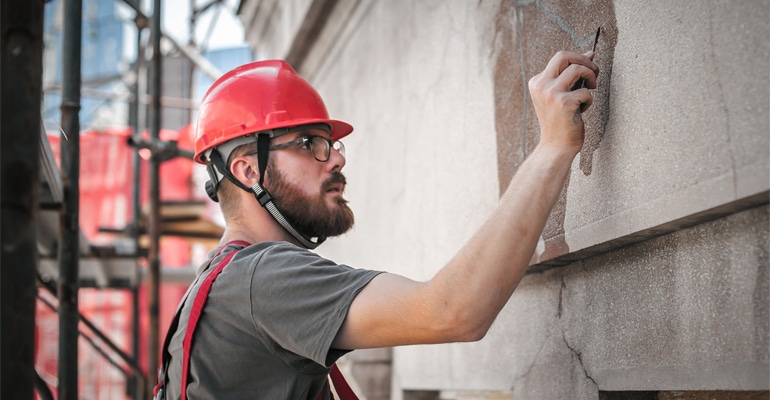ICRI Committee Targets Concrete Repair Sustainability
The International Concrete Repair Institute is implementing goals and tools to elevate sustainability, increase longevity and reduce waste.
April 28, 2022

A key component of sustainability in the built environment is resilience and durability. Not having to demolish and replace structures avoids the emissions required to use new materials while helping to minimize waste, among a range of other benefits. Concrete rehab and repair is therefore an important aspect of making buildings and infrastructure more sustainable, as well as safer and aesthetically pleasing.
The International Concrete Repair Institute recognizes this and has formed Committee 160 – Life Cycle and Sustainability to address some of the most important issues impacting the concrete industry. The committee’s mission is to “Increase the longevity, resiliency, durability, and sustainability of concrete structures by providing tools to repurpose, protect, upgrade, extend the life, and maintain concrete structures.”
One of the committee’s first tasks is to create a Sustainability Award, a project that kicked off last fall.
The second project is developing guidelines for predicting corrosion-related service life for existing reinforced concrete structures. “Structure service life prediction is critical to owners and engineers to develop proper maintenance programs and repair schedules,” the committee noted. “The lack of awareness of structure service life prediction is a concern for engineers and asset owners. Proactive approaches to assessment and repair will lead to more sustainable and cost-effective solutions for rehabilitation and repair.”
The committee noted that while the ACI562 code for existing structures requires a maintenance program for a repaired structure, it doesn’t offer guidance on predicting service life. And while committees and tools are being developed by ACI, they do not apply specifically to existing structures. The guideline document will provide best practices for life cycle extension for owners, engineers, architects, designers, and contractors.
“Extending service life and resiliency of a structure saves energy and material costs, enhancing sustainability,” the committee explained. “Raising awareness and improving the standards for service life cycle assessment of existing structures and developing a good maintenance/repair schedule will directly increase the longevity of the structure, thereby positively impacting the environment.”
Vincent Lapointe, coordinator of technology transfer of SIMCO Technologies and chair of Committee 160, said the guidelines are important to ensure a proactive approach to diagnosing problems before they’re so significant they explode the budget or, worse, are beyond repair.
“ICRI exists to make sure they’re not just repairing for aesthetics but also so structures last longer—to extend the service life of the structure,” Lapointe said. “By using these tools, you can really measure before you intervene and compare different strategies to make cost-versus-performance ratio evaluations.”
Read more about:
sustainabilityAbout the Author(s)
You May Also Like




